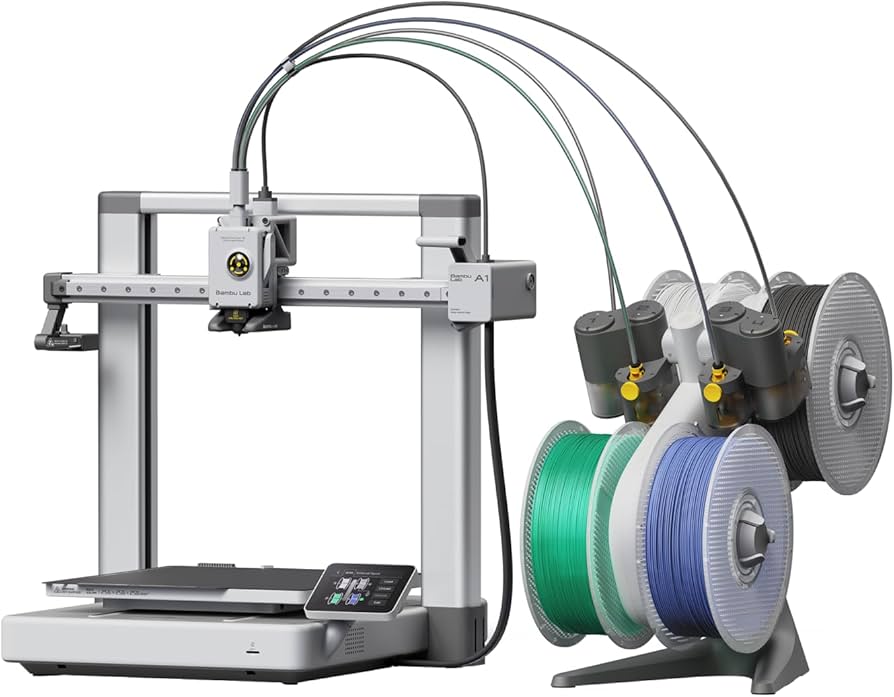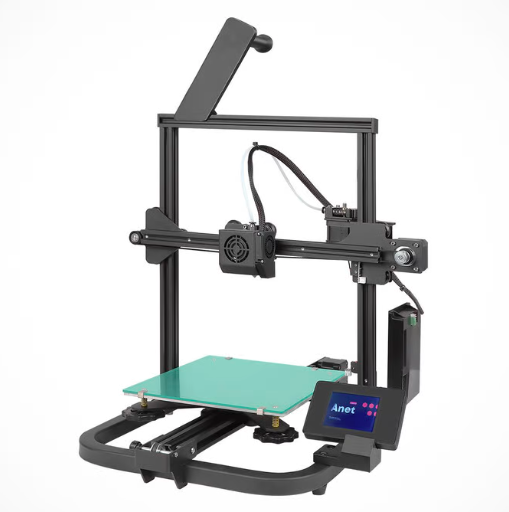Compare A1 vs A8 V2
Comparison between the best 3D printers
Choose the best 3D printer at the best price. The cheapest 3D printers are here.
Buy a 3D printer here with 3D Fila.
 |
 |
|
| Model | A1[BUY A1] |
A8 V2 |
| Printing Material | Filament | Filament |
| Buy Filament for Bambu Lab A1 | Buy Filament forAnet A8 V2 | |
| Estimated price | $700,00 | $129,00 |
| Manufacturer | Bambu Lab | Anet |
| Release Year | 2023 | 2021 |
| Print Volume [mm] | 256x256x256 | 220x220x250 |
| Printer Size [mm] | 385x410x430 | 428x441x486 |
| Weight [kg] | 8,3 | 6,2 |
| Power Loss Recovery | YES | NO |
| Enclosed printer | NO | NO |
| Bed Leveling | Automatic | Manual |
| Filament End Sensor | YES | NO |
| Bed type | Heated | |
| Power supply system | Direct Drive | Bowden |
| Standard nozzle | 0,4 | 0,4 |
| Maximum Nozzle Temperature [°C] | 300 | 230 |
| Maximum Bed Temperature [°C] | 100 | |
| Maximum printing speed [mm/s] | 500 | 150 |
| Filament holder | YES | YES |
| Camera for supervision | YES | YES |
| Recommended filaments | PLA, PETG, TPU, PVA | PLA |
| Recommended slicers | SuperSlicer, PrusaSlicer, Cura, OrcaSlicer | Cura, Simplify, Slic3r, IdeaMaker |
| Maximum Resolution [mm] | 0,1 | 0,1 |
| Processor | ||
| Display | Touchscreen 3,5 | Display touchscreen 2,8'' |
| Power Supply | 350 W | 110/220V / 250W |
| Connectivity | Wi-Fi, Bambu-Bus, Cartão Micro SD | SD / USB |
| Operating systems | Windows, Linux, Macbook | Windows, Mac, Linux |
| Date of registration in the system | 2024-07-17 | 2022-11-10 |
| Release date | 2023 | 2021 |
| Extra features | The BambuLab A1 printer features fully automatic calibration, multi-color printing with the AMS system, active flow rate compensation, quick nozzle change with a clip, active motor noise cancellation, a build volume of 256x256x256 mm³, a maximum extruder temperature of 300°C, and a heated bed of up to 100°C. In addition, it has high precision, a machine health management system and an intuitive 3.5-inch touchscreen interface. | The Anet A8 V2 is a Cartesian-XZ type 3D printer with a build volume of 220 x 220 x 250 mm, Ender 3 design and V-slot assembly. It has a 32-bit motherboard and touchscreen interface, promising ease of use. It uses open source firmware and has thermal failure protection. It stands out for its cable organization and the absence of a heated bed, focusing on energy savings and PLA printing. It comes with an external power adapter, aiming at greater safety, especially for beginners and educational use. |
| Support for multiple colors and materials (AMS and CFS) | YES | NO |
Notes * |
||
| Cost-benefit | 7 / 10 | 6 / 10 |
| Hardware | 4.2 / 10 | 0.5 / 10 |
| Tela | . | . |
| Print volume | 4 / 10 | 3 / 10 |
| Performance | 4 / 10 | 1 / 10 |
| [BUY A1] |
Conclusion |
| In concluding the comparison between the Bambu Lab A1 and the Anet A8 V2, it is clear that both printers cater to different segments of the 3D printing market due to their significant differences in features, capabilities, and pricing. The Bambu Lab A1, featuring a higher price point, offers advanced technology and features suitable for users seeking performance and versatility. It boasts a larger print volume, impressive maximum printing speed, and numerous features such as automatic bed leveling, a filament end sensor, and the ability to print with a broad range of materials. The inclusion of a touchscreen interface and connectivity options like Wi-Fi improves user experience and integration into a modern workflow. Its higher manufacturing capabilities, combined with the extensive support for different filaments and colors, make it an ideal choice for professionals and enthusiasts aiming for high-quality results and efficiency. In contrast, the Anet A8 V2 is an economical option targeting beginners or those looking for an affordable entry into the world of 3D printing. Although it lacks various advanced features present in the A1, such as automatic bed leveling and a heated bed, it still provides a reliable platform for PLA printing with a decent build volume. Its simpler functionality and lower price make it suitable for educational purposes and hobbyists who are just starting and may not need the complex capabilities of a more advanced model. Ultimately, the choice between these two printers hinges on budget and specific user needs. The Bambu Lab A1 represents a robust investment for serious users wanting cutting-edge performance, while the Anet A8 V2 offers a practical and budget-friendly entry point for casual users or educational settings looking to explore 3D printing technology without a significant financial commitment. |

